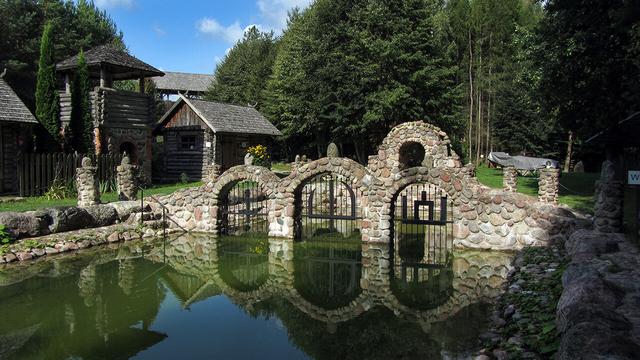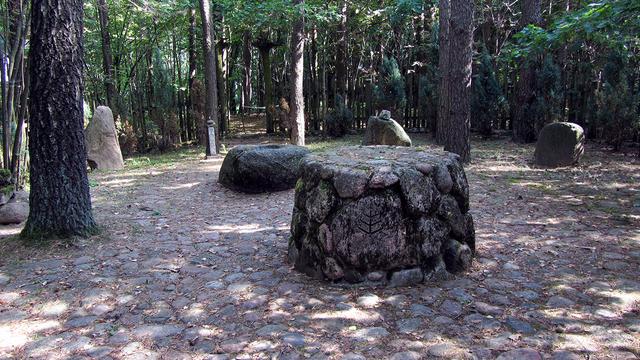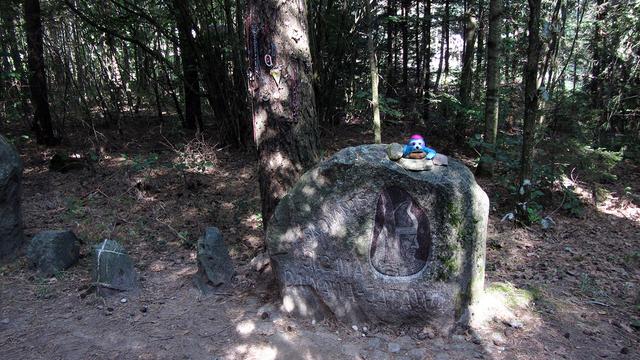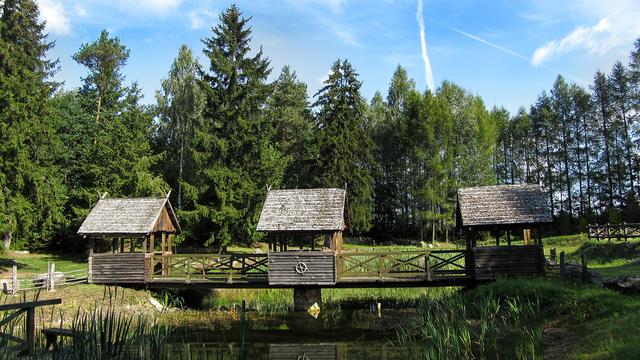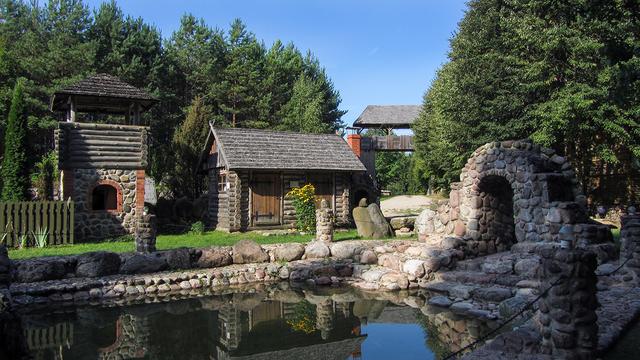@
Thomas Eibich aka DK2NB Bauen die Workshops aufeinander auf oder kann man auch einfach so mal vorbei kommen?
Wir haben jedes Mal Leute dabei, die zum ersten Mal bei der Sprechstunde sind und häufig auch erst seit kurzem überhaupt im Fediverse. Das ist also kein Problem. Und da baut auch nichts aufeinander auf.
Was ist Hubzilla?
Oh, da muß ich weit ausholen. (Ich kommentiere übrigens gerade von Hubzilla.)
Hubzilla ist das absolute, ultimative Featuremonster im Fediverse. Eine Art Alleskönner, der Features hat, die für die allermeisten Fediverse-Nutzer im Fediverse völlig unvorstellbar sind, aber auch Features, die sich viele im Fediverse wünschen. Wohlgemerkt, ohne zu wissen, daß es diese Features im Fediverse längst gibt.
Hubzilla ist im Prinzip "Facebook trifft WordPress trifft Google Cloud Services trifft noch mehr Zeug" im Fediverse, und es kann mit wenigen Mausklicks aufgebohrt werden zu "Facebook trifft WordPress trifft Google Cloud Services trifft Joplin trifft GeoCities trifft
<irgendeine Wiki-Engine hier einsetzen> trifft noch mehr Zeug" im Fediverse. Ja, GeoCities. Man kann buchstäblich Webseiten auf Hubzilla aufbauen.
Hier sind ein paar Links:
Hubzilla ist übrigens älter als Mastodon.
Hubzillas Vater ist @
Mike McCue , ein pensionierter professioneller Software-Entwickler mit fast einem halben Jahrhundert an Erfahrung. Der hat schon 2010, noch vor dem in dem Sommer in den Himmel gehypeten diaspora*, eine extrem vielseitige und extrem leistungsfähige freie, quelloffene, dezentrale Facebook-Alternative gestartet, die ursprünglich
Mistpark hieß und heute als
Friendica bekannt ist. Die gibt's heute hoch, sie ist Teil des Fediverse, und sie ist mit Mastodon föderiert, seit es Mastodon gibt.
Friendica ist kein Facebook-Klon, sondern eine Facebook-Alternative, die grundsätzlich dieselbe Funktion haben soll wie Facebook, aber besser als Facebook ist. Friendica kann nebenher auch genutzt werden als vollwertiges Blogging-System mit allen Schikanen: Titel, Zusammenfassung, Kategorien, alles Mögliche an Textformatierung, beliebig viele Bilder mitten im Text eingebettet, über 16 Millionen Zeichen.
Friendica wurde aufgebaut auf seinem eigenen Protokoll namens DFRN. Aber ein Killerfeature von Friendica war schon immer, daß es sich in alle möglichen und unmöglichen anderen Richtungen verbinden kann: Fediverse, diaspora*, Tumblr, WordPress, sogar Twitter, ein paar Jahre sogar Facebook und so weiter.
So ganz zufrieden war er damit aber nicht. Ein großes Problem war nämlich, daß jedes Mal, wenn ein öffentlicher Friendica-Node dichtmachte, die Nutzer alles verloren. Auf die Lösung kam er 2011: nomadische Identität, also die Möglichkeit, die eigene Social-Networking-Identität gleichzeitig voll synchron auf mehreren Servern zu haben.
Dafür entwickelte er ab 2011 ein neues Protokoll names Zot, das genau diese Funktion bieten sollte. Um es zu implementieren, forkte Mike noch 2011 einen Friendica-Fork, den er im selben Jahr erstellt hatte, um mit verschiedenen Lizenzen zu experimentieren. (Deswegen steht Friendica heute unter der AGPLv3 und die meisten seiner "Nachfahren" weiterhin unter der MIT-Lizenz.)
So entstand etwas namens "
Red" (von spanisch "la red" = "das Netzwerk"). 2012 wurde es komplett neu geschrieben gegen das Zot-Protokoll. Das war der eigentliche Startschuß für Hubzilla. Damals gab Mike übrigens Friendica (das inzwischen auf die AGPLv3 relizensierte Original) an die Community ab. Ende 2012 wurde Red umbenannt in "
Red Matrix", weil man "Red" nicht googlen kann.
Allerdings wurde die Red Matrix kaum angenommen, weil sie im Grunde Friendica mit vielleicht ein oder zwei weniger Verbindungsmöglichkeiten und nomadischer Identität war. Die meisten verstanden nomadische Identität aber gar nicht, und von denen, die sie verstanden, glaubten viele, sie gar nicht zu brauchen, weil sie eh ihr Friendica-Konto auf ihrem eigenen Node hatten.
So gab es dann im März 2015 den Schnitt. Mike und seine Mitstreiter aus der Community nahmen die Red Matrix und strickten sie um für neue Zielgruppen, insbesondere Betreiber öffentlicher Server. Dafür wurden haufenweise neue, teilweise optionale Features drangebaut: WebDAV für den eingebauten Filespace, ein CalDAV-Server, der das Frontend des Eventkalenders mitnutzt, ein CardDAV-Server, nichtföderierende Artikel, Planungskarten, Wikis, Webseiten usw. usf. Und das Ganze wurde umbenannt in
Hubzilla.
Wir sind übrigens immer noch zehn Monate vor dem Start von Mastodon.
Standardmäßig föderiert Hubzilla nur über sein eigenes Zot-Protokoll. Es unterstützt immer noch einiges an nichtnomadischen Protokollen und Verbindungen, aber alles, was nichtnomadisch und bidirektional ist, ist optional und standardmäßig deaktiviert, muß also in einem neuen Kanal erst aktiviert werden. Darunter fällt auch ActivityPub, das Hubzilla seit Juli 2017 als allererste Software überhaupt implementiert hat, zwei Monate noch vor Mastodon.
Damit war aber das Ende der Fahnenstange noch nicht erreicht.
Mike wollte das Zot-Protokoll noch weiter entwickeln, und zwar auf Arten und Weisen, die möglicherweise die Kompatibilität beeinträchtigten. Das konnte er nicht auf Hubzilla selbst machen.
Also gab er 2018 Hubzilla ab an zwei Entwickler aus der Community und forkte es. Erst kam
Osada, das wohl zunächst als Entwicklungsplattform für Zot6 dienen sollte, aber trotzdem noch die meisten von Hubzillas Verbindungsmöglichkeiten hatte. Bei Osada wurde übrigens fast alles wieder entfernt, was beim Umbau von der Red Matrix zu Hubzilla dazugekommen war.
Wie es aber zunächst aussah, würde Zot6 nicht mit nichtnomadischen Protokollen zusammenspielen können. So entstand als zweiter Fork
Zap; ich glaube heute, Zap war ein Fork von Osada und nicht von Hubzilla. Jedenfalls behielt Osada die ganzen Verbindungsmöglichkeiten, verlor aber nomadische Identitäten. Zap wiederum blieb nomadisch, unterstützte aber nur Zot6.
Schließlich stellte sich heraus: Zot6 konnte sehr wohl mit nichtnomadischen Protokollen zusammenspielen. Also wurde Osada, wie es war, Anfang 2019 eingestampft. Die Idee, einen Osada-Kanal als Gateway zwischen Zap und dem Rest des Fediverse zu haben, war sowieso gaga und wenig praktikabel. Dafür wurde von Zap kurz darauf
ein zweites Osada geforkt, das sich zumindest wieder mit ActivityPub verbinden konnte. Das war zunächst der einzige Unterschied zwischen Osada und Zap.
Im Laufe des Jahres wurden Osada und Zap stabil. Das heißt auch, Osada war so stabil, daß es keinen Grund mehr gab, warum Zap kein ActivityPub können sollte. Kurz darauf war der einzige Unterschied zwischen Osada und Zap neben dem Branding, daß auf Osada-Servern ActivityPub standardmäßig aktiviert und auf Zap-Servern standardmäßig deaktiviert war. Weil auch das Käse war und nur unnötigen Mehraufwand in der Entwicklung mit sich brachte, wurde das zweite Osada im Herbst 2019 komplett in Zap gemerget und eingestellt.
Weil Zap jetzt aber ein stabiler Daily Driver war, brauchte Mike wieder neue Entwicklungsplattformen für Zot8. Dafür wurden 2020
ein drittes Osada,
Mistpark 2020 (alias
Misty) und
Redmatrix 2020 geforkt. Es gab das Gerücht, daß sie verschiedene Stabilitätsstufen darstellten. Tatsächlich waren sie bis auf das Branding identisch, und es waren deshalb drei, weil Mike damit die Markenfetischisten im Fediverse trollen wollte.
Einen stabilen Release mit Zot8 gab es nie. Statt dessen kam im Frühjahr 2021
Roadhouse dazu als Fork von einem von den dreien. Das basierte eigentlich schon auf Zot11, aber Zot11 war zu Zot6 in keinster Weise mehr kompatibel. Also entschied sich Mike, das Protokoll in Nomad umzubenennen. Heute sagt Mike, alle Versionen des Protokolls heißen jetzt Nomad; die Hubzilla-Entwickler widersprechen ihm aber und sagen, Zot6 ist immer noch Zot.
Jetzt hatte Mike fünf Projekte, die unterschiedliche Protokollversionen nutzte, ansonsten aber dasselbe konnten und fast dasselbe UI hatten.
Up- und Crossgrades gingen übrigens ganz einfach, in dem die Codebase des Servers umgestellt wurde. Man konnte von Zap nach Osada, Misty und Redmatrix 2020 upgraden. Man konnte zumindest zwischen Osada, Misty und Redmatrix 2020 hin und her crossgraden. Und man konnte von allen vieren nach Roadhouse upgraden.
Im Oktober 2011 forkte Mike Roadhouse in wieder etwas Neues. Dieses Mal ging er in eine ganz andere Richtung: Was er jetzt erschaffen hatte,
hatte keinen Namen. Es hatte kein Logo. Es hatte keine Markenidentität. Es war auch kein Projekt mehr. Alles mit voller Absicht und sehr gut begründet. Noch dazu nahm er sogar die MIT-Lizenz weg und stellte es direktweg in die Public Domain. Damit wollte er noch größere Anreize für Entwickler schaffen, es zu forken, um daraus etwas Eigenes zu bauen.
Das Code-Repository brauchte aber zwingend einen Namen. Also wurde es "streams" genannt (ein Stream ist von Friendica bis heute das, was auf Twitter ein Feed und auf Mastodon eine Timeline ist). Weil nun aber die Community etwas brauchte, womit sie diese neue Software bezeichnen konnte, nahm sie den Namen des Repository und packten ihn in Klammern, um klarzustellen, daß das nicht der Name der Software war. Seitdem wird es seitens der Community "
(streams)" genannt.
Von Zap, Osada, Misty, Redmatrix 2020 und Roadhouse konnte durch Rebasen auf (streams) geupgradet werden. Weil (streams) selbst aber keinen Namen, kein Branding und nicht mal einen festgelegten Identifier für den Servertyp hat, übernahm es kurzerhand den Server-Identifier und das Logo von der vorherigen Software. Ich habe selbst mal einen (streams)-Server gesehen, der mit Zap angefangen hatte (wie aus der Subdomain hervorging) und zwischendurch mal Misty war (weil er als Misty gebrandet war), aber vom UI und von der Softwareversion her eindeutig (streams) war.
Zum Silvesterabend 2020 stellte Mike dann Zap, Osada, Misty, Redmatrix 2020 und Roadhouse ein. Wer noch einen Server betrieb, dem war dazu geraten, auf (streams) upzugraden.
(streams) wird heute noch von Mike weiterentwickelt. An Verbindungsmöglichkeiten hat es neben Nomad auch Hubzillas Zot6 und optional, aber standardmäßig aktiviert ActivityPub. Sogar RSS- und Atom-Feeds werden nicht mehr unterstützt, um den Entwicklungsaufwand zu reduzieren.
Der letzte Fork kam im August 2024. Mike war ja damals einer der beiden Entwickler, die an nomadischer Identität über ActivityPub arbeiteten. Im Zuge dieser Entwicklung rollte Mike Portable Objects nach FEP-ef61 im Juni vom "nomadischen" Zweig von (streams) in den hauptsächlichen Entwicklungszweig und im Juli von da in den stabilen Zweig aus. Was im Labor aber funktioniert hatte, sorgte im täglichen Einsatz für Chaos, weil (streams) zuviele verschiedene Identitäten zu jonglieren hatte.
Also forkte Mike (streams) im August zu
Forte, entfernte jegliche Unterstützung für Nomad und Zot6 und basierte das ganze Ding komplett auf ActivityPub, und zwar inklusive nomadischer Identität. Das dürfte hauptsächlich passiert sein, um die Nomad- und Zot6-Identitäten loswerden zu können, um das Chaos sichten zu können, aber auch, weil nomadische Identität über ActivityPub die Zukunft sein soll.
Zum 31. August warf Mike erst alle Brocken hin und wollte mit Entwicklung aufhören, weil das alles ein Riesenaufwand war. Er machte aber trotzdem weiter, weil sich in der winzigen (streams)-Community niemand fand, der (streams) und das noch instabile Forte hätte übernehmen können.
Im September wurde erstmals ein Post von Forte durch das öffentliche Fediverse föderiert. Von da an gab es die ersten, die mit ihren eigenen Forte-Servern experimentierten. Und im März 2025 erklärte Mike Forte offiziell für stabil. (streams) lebt aber weiter, denn sein Killerfeature gegenüber Forte ist, daß es ActivityPub nicht braucht. Man kann es also als Zugbrücke verwenden, um das ganze ActivityPub-basierte Fediverse auf einen Schlag auszusperren.
#
Long #
LongPost #
CWLong #
CWLongPost #
LangerPost #
CWLangerPost #
FediMeta #
FediverseMeta #
CWFediMeta #
CWFediverseMeta #
Fediverse #
ActivityPub #
Zot #
Zot6 #
Nomad #
Mistpark #
Friendica #
Red #
RedMatrix #
Hubzilla #
Osada #
Zap #
Mistpark2020 #
Misty #
Redmatrix2020 #
Roadhouse #
Streams #
(streams) #
Forte